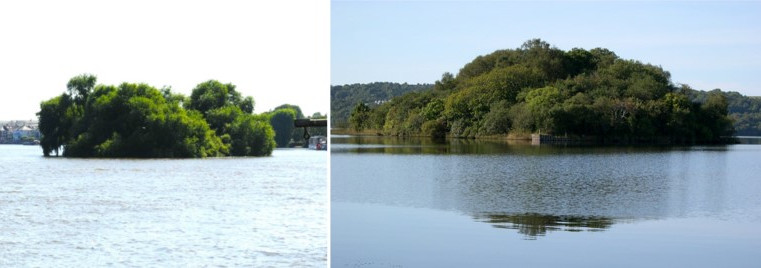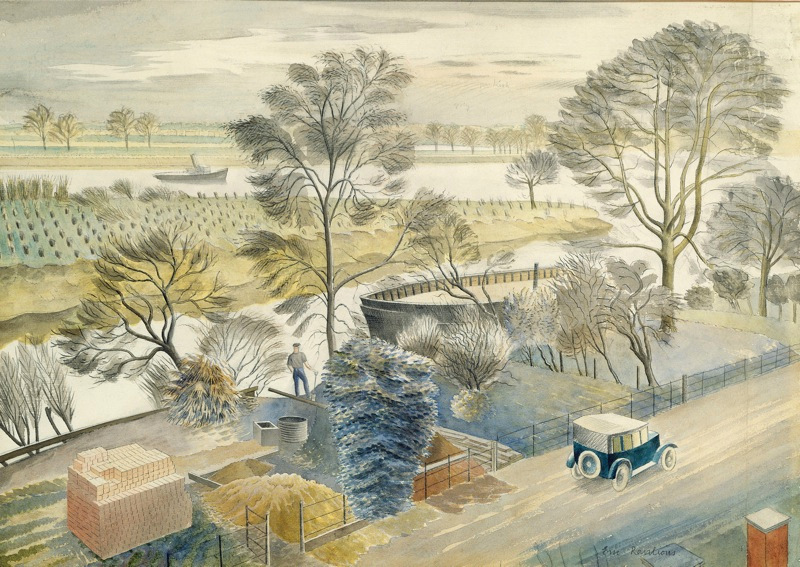Chiswick Eyot
Location 9

Yeats spent much of the summer of 1888, his first year back in Chiswick, walking along the Thames river bank. We know, because “John Sherman”, that young London-Irish exile in Yeats’s novel of the same name, spends a great deal of time here, being reminded of a river near his home in Ballah, a town very like Yeats’s mother’s home town of Sligo, where he’d spent so many summers.
Here’s how Yeats describes one of John Sherman’s summer days by the river:
He was set dreaming a whole day by walking down one Sunday morning to the border of the Thames — a few hundred yards from his house — & looking at the osier-covered Chiswick Eyot.
It made him remember an old day-dream of his. The source of the river that passed his garden at home was a certain wood-bordered & islanded lake, whither in childhood he had often gone blackberry-gathering. At the further end was a little islet called Innisfree…
We can imagine Yeats, spurred by such memories, walking the “few hundred yards” back to Blenheim Road and rushing upstairs to write “The Lake Isle of Innisfree”.
But another famous poem Yeats wrote that summer, owes its completion to the osier-covered Chiswick Eyot and the osiers along the tow path as he’d walk — as John Sherman did — from here to Putney and back by Hammersmith, Upper Mall and Kelmscott House.
Osiers, which are a form of willow, were needed for basket-making, and furniture, and in the West of England and Ireland, as withies to hold down thatched roofs. And every town, and country manor, had its willow gardens for that reason. Which also, because of their drooping greenery, were the ideal place for lovers’ trysts, and appear in folks songs such as “Down by the Willow Gardens”. Except that in Ireland the willow is known as “salley”, from saileach in Irish, derived from salix in Latin.
And so Yeats, in that summer, dreaming of the West of Ireland, and just as he had made dramas out of the lives of ordinary people, took a snatch of a folksong and added his own story of love and loss, of a young man who didn’t know you can’t hurry love, and who, perhaps recognising his own determination to succeed, needed to be told to take life easy too.

